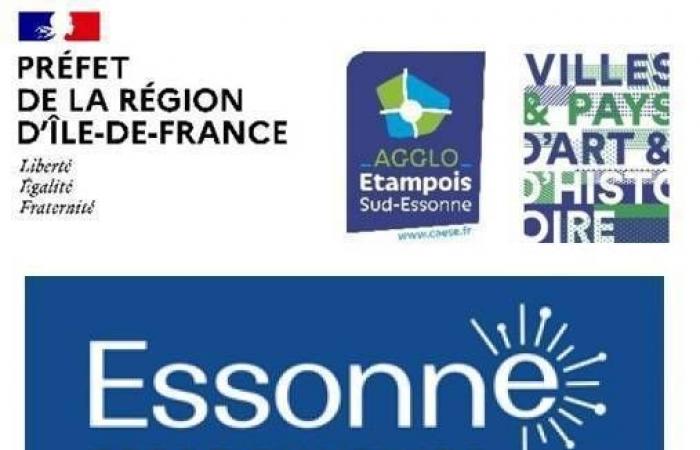Artistic disciplines of the residency-mission
Project open to all artistic, cultural and scientific and technical disciplines, investigating the relationships between arts and sciences, in connection with the territory and heritage of Etampois Sud-Essonne, with a dominant digital arts, while wishing to emphasize on multidisciplinarity and by breaking down the barriers between artistic practices: digital arts, plastic arts, visual arts, performing arts (theatre, dance, music, etc.)…
This new edition of the Territorial Artistic and Cultural Education Contract aims to bring digital sciences and arts into dialogue with the territory of Étampois Sud-Essonne, digital art designating a varied set of creative categories using the specificities of computer language. Bringing together art, science and technology, it is a constantly evolving, moving art. Computer graphics, collage, digital painting, video art, digital photography, interactive installation, generative art, kinetic art, network art, artificial life, virtual or augmented reality, mapping, game art, bio art… So many varied fields that can inspire a collective of artists, by conceiving digital creation as a vector of connection between individuals and their territory, but also as a means, a tool, capable of questioning and highlighting its heritage, its dynamics, its issues, its challenges, and everything that makes it its richness and its identity.
Digital creation makes it possible to produce and express new imaginations, great materials for appropriation, and even reinvention, of the territory by the participants. Indeed, digital arts form an interactive, generative and immersive art, producing moving creations, in constant evolution and based on interactions with a wide diversity of audiences. In the same way, the work carried out with the participants must take into account the diversity of the groups to which the project is aimed and, although structured in its proposal, its deployment must include a phase of co-construction of the project with the groups, leaving a part of personal interpretation of the participants and a possibility of participation in the direction of the project.
Beyond artistic practice and creation, (re)create links between individuals, encourage sharing, exchange and meeting between participants who are part of the same geographical and/or social proximity, in as residents, is a major issue for CTEAC. The “Digital Arts and Territory” project must necessarily pursue a process of appropriation by the participants of their territory, on which they live and with which they evolve: a territory in perpetual change, between rurality and urbanity, in a society of information and communication and whose technological environment is constantly evolving, facing the challenge of digital transition. It is also this territorial and social context that the project must integrate in order to work as close as possible to the reality of residents and future participants. Beyond the technological tools they involve, digital arts explore new environments to grasp and question social, territorial, artistic, scientific and cultural issues.
With digital technology, the relationship with reality and territories evolves and questions. New tools are emerging in the age of dematerialization. Maps and GPS, uses and applications, words and SMS, digital technology is at the heart of our society. It transforms our relationship with the world where we free ourselves from the relationship to time and physical distances, but also our connection with others. With augmented reality in particular, territories are opening up to new stories and new participatory, contributory and evolving tools.
When it is not part of an artistic approach, digital technology is revolutionizing and intends to gradually make daily life easier. For example, it makes it possible to create and maintain the link between individuals, via communication tools. However, certain negative aspects should not be overlooked, such as the addictive nature that digital technology can have, or its impact on social isolation.
people, especially those who do not master the tools. These paradoxes relating to the omnipresence of digital technology in our daily lives are as many points of vigilance as possible levers for investigation and experimentation in the artistic and cultural project to be carried out within the framework of this CTEAC.
Despite a theme focused on digital arts, the project is open to connections with other artistic fields. Indeed, this CTEAC is part of a desire to promote bridges not only between artistic disciplines through multidisciplinary work, but also between the inhabitants of the territory of Étampois Sud-Essonne.
Led by one or more artist(s), in connection with their work, participants will be invited to take the time to explore, experiment and appropriate the artistic practice proposed as well as the territory, the natural environment, rural and/or urban, in which they fit.
For this project, both digital and territory are considered both as materials but also as spaces for expression and creation. They can be the materials to be used, manipulated, appropriated, interpreted and created, as well as the materials or results at the heart of the artistic, cultural and scientific production carried out with the participants.
Aimed at the citizens of tomorrow and (future) actors of the territory, the project will contribute to supporting the participants in their appropriation of the territory in which they are part, in all its forms, and by promoting meeting and sharing with the inhabitants through artistic expression putting digital arts at the forefront and thinking outside the box.






